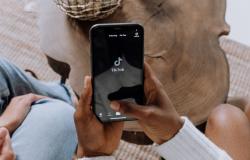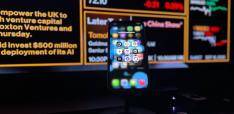The First TikTok War: Lessons in diplomacy from TikTokkers on the frontlines

Leesa Danzek explores social media influencers as a tool for diplomacy.
Search “#ukrainewar” on TikTok and you may find a handful of Ukrainian soldiers dancing to James Brown’s classic “I Feel Good” on a side road. You would be one of over 200,000 TikTok users to view the video. Continue down this rabbit hole and you’ll find varieties of missile launchings set to the tune of techno music to scenes of both joy and agony, and even young Ukrainian soldiers’ takes on popular TikTok dances.
Just as America’s War in Vietnam was the “first television war,” the War in Ukraine is very much the first TikTok war. While each era of digital innovation has brought about new facets to the people of conflict and revolution – such as social media as a tool for protest planning during the Arab Spring or deployed soldiers giving updates on blogs and social media – democratic governments have grappled with how to respond to and utilize these platforms to meet their foreign policy objectives.
Whether governments like it or not, media, and especially social media, export cultural and political messages. Shy of censorship, democracies can attempt to limit the influence of informal messengers, or they can open themselves up to new tactics and honest analysis of their impacts.
“Influencer diplomacy,” as I will refer to it, is the formal or informal use of non-state actors on social media to export ideas. These ideas, however, are not always aligned with the objectives of the state.
Take comparisons to America’s first television war, for example. Military censorship of media coverage of World War II allowed for “upbeat” representations of the war, locking in support for the war effort and America’s leading role in it. During the Vietnam War, however, such strict censorship diminished and daily coverage of combat zones fueled anti-war sentiment that eventually pressured lawmakers to withdraw from the region.
In addition to more direct influence over policy, media and online personalities can operate similarly to the free press. For example, major and independent outlets exposing elements of Alexey Navalny’s poisoning or Philippine’s President Duterte’s massive drug killings educates the international public living under free, accessible press. Their coverage ultimately informs how the public views leaders and policies, influencing their political opinions.
With Americans spending hours per day on social media, and nearly half of American adults consuming their news from social media, there leaves space for news and information to reach consumers from more diverse or grassroots sources, as well as those unchecked.
Those with a digital platform and captivating content can earn the eyes and ears of millions across the world, as is the case on the frontlines of Ukraine, where young soldiers are sharing daily activities, images of destroyed neighborhoods, and frigid conditions. For some, it may simply be the use of an outlet that millions of teens and young adults utilize. For others, it is an opportunity to share their stories and experiences, exposing the realities of Putin’s invasion. In doing so, Ukrainian soldiers are knowingly or unknowingly exporting these experiences and influencing how TikTok users view the War in Ukraine, and thus NATO support for Ukrainian defense.
The impact of such digital influencers applies to disinformation, as well. The Russian paramilitary Wagner Group is also accused of posting propaganda on the platform aligned with Putin’s false branding of Ukrainians as Nazis. For those whose social media content is entrenched by algorithms, it can be difficult to notice misinformation or differentiate propaganda from authentic content. In any case, real or fake content influences the opinions of consumers, impacting their support for domestic and foreign policies.
The problem remains: what are states to do?
Some states are taking control of the narrative as if it were a coordinated marketing campaign. China, for instance, recruited prominent, American social media influencers to promote China’s image during the 2022 Winter Olympics in Beijing. Influencers were directed to include tourist content, like culture and history, as well as positive coverage of US-Chinese relations.
A campaign like this is not much different than a skincare brand paying an Instagram influencer to showcase and promote their products. But isn’t it different? Is it not false advertisement of politics? At the very least, it is a tactic to distract the attention of the wider international community.
Yet, the impact of such a campaign remains. Foreign ministries are not swayed by the content, but social media consumers among the general public might be. Just as American teens see Ukrainian soldiers on TikTok and may find themselves supporting more aide to Ukraine, one could just as easily come to believe Chinese and United States relations are fine and dandy.
Rather, democracies should equip their diplomatic corps to embrace informal influencer diplomacy. Informal influencer diplomacy are of the populace and with authentic followings, like Olena Gnes who turned her Ukrainian tourism page into daily updates at the onset of Putin’s invasion, or those who livestreamed Tahrir Square in 2011.
TikTok and other social media platforms are a unique opportunity to do more with public diplomacy than posting photos with dignitaries and trips throughout foreign posts. Formal diplomats should be cultivating relationships with informal influencer diplomats who hold engaged eyes and ears. Not only is it a rare opportunity to learn from grassroots and frontliners, but a working relationship allows formal diplomats to also engage new audiences not necessarily plugged in to diplomatic affairs. Doing so also provides a platform to extend state priorities in an informal, widely disseminated format.
Diplomats should also consider elevating influencer diplomats who authentically represent their home countries’ culture and public sentiment. Chances are that typical young people will be more open to those who engage with the same platforms in the same way they do than they will the ambassador of any given country.
But like any strategy from a foreign ministry office, embarking into influencer diplomacy and working with influencer diplomats should not be done without careful consideration. It is a real concern that associating with or highlighting public figures outside the halls of government can lead to a public relations disaster with one inappropriate comment or opposing stance.
The art of engaging in influencer diplomacy, though, comes both in maintaining an appropriate distance from influencers and allowing content and outreach to remain authentic. One approach to engaging with the platforms of informal influencer diplomats is by inviting them to attend or cover large cultural events, just as one would a journalist. Without compensated, influences are invited to partake in broader activities at events that demonstrate cultural distinction, advancements toward climate change and gender equality, or other key messages. Their content is then shared with the general public.
Wider lessons can be learned from influencers’ style, as well. Is there opportunity for diplomats and foreign ministries to take a more grounded approach to social media and public diplomacy?
Consumers are drawn to non-celebrity social media influencers because their lives and content are more relatable; diplomats should be encouraged to produce such content. Inspired by the “get ready with me” trend, diplomats can share preparations for a cultural meal associated with a lesser-known national holiday. Educational, professional, and on-message content is then exported to their audience and the general public.
Diplomats can also utilize social media to appear more relatable with the “point of view” or “behind the scenes” trends, showing bits of their meetings with NGOs and local governments, or even those with United Nations, European Parliament, and African Union delegations.
Strategically engaging with influencer diplomacy is a 21st century tactic. Just as formal diplomats have learned to manage TV press, smart phones, and social media, they too can utilize the extensive network of social media content, consumers, and content creators.
Foreign ministries should not be shy but should caution an aggressive approach to breaking into the informal influencer circuit. States cannot marry their foreign policy to the status of TikTokkers. Their legitimacy is also tied to the professionality of their social media accounts, suggesting content inspired by popular trends should be carefully curated and devoid of dances and, sometimes, even of trending audio.
Influencer diplomacy indicates a far more grassroots style of exporting culture and ideas. Without understanding, analyzing, and utilizing its presence, states remain just as behind as last year’s TikTok dance.
Leesa Danzek is a Master of Arts student in the Democracy and Governance program at Georgetown University, with a background in public affairs and political campaigns. Her interests include the role of civil society in democratization and democratic backsliding, as well as the intersection of policy, media, and grassroots organizing.
Photo by cottonbro studio


